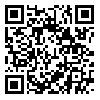Volume 22, Issue 66 (9-2022)
jgs 2022, 22(66): 429-447 |
Back to browse issues page
Download citation:
BibTeX | RIS | EndNote | Medlars | ProCite | Reference Manager | RefWorks
Send citation to:



BibTeX | RIS | EndNote | Medlars | ProCite | Reference Manager | RefWorks
Send citation to:
rahimzadeh sisibig S, shichaslami A, zakerhaghighi K. (2022). An analysis of the role of non-governmental organizations in improving the urban management system from the perspective of the citizens of the metropolis of Tehran. jgs. 22(66), 429-447. doi:10.52547/jgs.22.66.429
URL: http://jgs.khu.ac.ir/article-1-3731-en.html
URL: http://jgs.khu.ac.ir/article-1-3731-en.html
1- phd student,urban planning,departement of urban planning, borujerd branch,islamic azad university, borujerd,iran, Borujerd Azad University
2- Assistant Professor in geography and urban planning,departement of geography and urban planning,borujerd branch.islamic azad university,borujerd,iran, Borujerd Azad University ,guplan@gmail.com
3- Associate Professor in urban planning, department of urban planning ,hamedan branch, islamic azad university, hamedan.iran,, Hamadan Azad University
2- Assistant Professor in geography and urban planning,departement of geography and urban planning,borujerd branch.islamic azad university,borujerd,iran, Borujerd Azad University ,
3- Associate Professor in urban planning, department of urban planning ,hamedan branch, islamic azad university, hamedan.iran,, Hamadan Azad University
Abstract: (7687 Views)
In this regard, the main purpose of this study is to investigate the role of non-governmental organizations in improving the urban management system of Tehran metropolis in six physical, functional, social, economic, environmental and institutional dimensions. The research method was descriptive-analytical and the data collection method was documentary and survey. The research tool was a questionnaire. The statistical population of the study was the citizens of Tehran and the sample size was 383 people. The data were analyzed using T-test and confirmatory factor analysis. The results show that the level of significance in all dimensions is lower than 0.05; Therefore, according to the average scores, NGOs in Tehran have mainly played a greater role in the social and environmental dimensions and in the economic and institutional dimensions in the form of an intermediary relationship between urban management and citizens. In the framework of confirmatory factor analysis, comparison of explanatory variance by six factors showed that social, environmental, functional, physical, economic and institutional factors have the highest variance in explaining the role of factors in the urban management system of Tehran. A total of 20 main factors in explaining the role of semen were confirmed; Thus, it was found that the Samanids, given that they are in direct contact with citizens, can accurately reflect urban issues and realities to the urban management system; For this purpose, it is suggested that first, according to their different functions, the subdivisions should be classified into specialized subdivisions on various urban issues, and also their position in the urban management system should be upgraded.
Keywords: Citizen Participation, Urban Management System, Participatory Urban Planning, NGO, Tehran Metropolis)
Type of Study: Research |
Subject:
Geography and Urban Planning
Send email to the article author
| Rights and permissions | |
 |
This work is licensed under a Creative Commons Attribution-NonCommercial 4.0 International License. |

This work is licensed under a Creative Commons — Attribution-NonCommercial 4.0 International (CC BY-NC 4.0)






